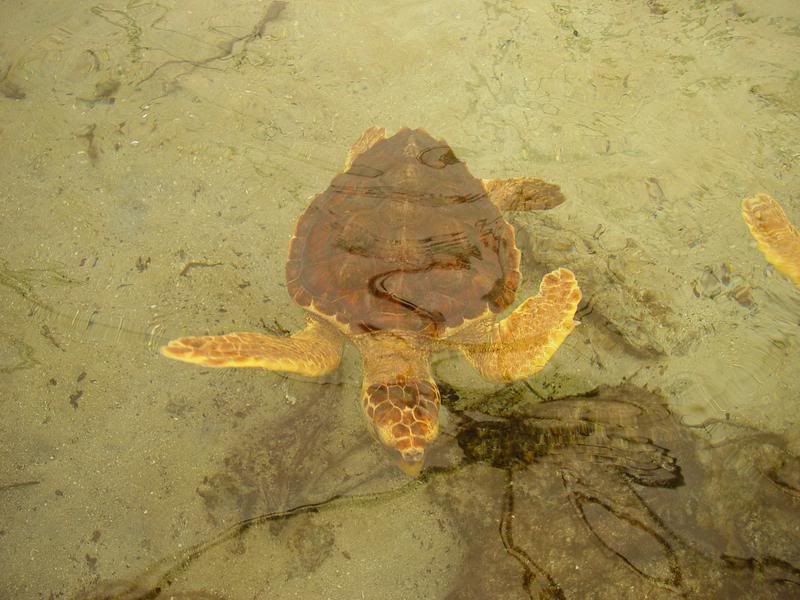ref·uge/ˈrefˌyo͞oj/
| Noun: |
- A condition of being safe or sheltered from pursuit, danger, or trouble.
- Something providing such shelter.
|
|
|
| Synonyms: | shelter - asylum - sanctuary - haven - harbor - harbour |
Right now, officials at the Fish and Wildlife Service (FWS) are contemplating allowing the hunting of alligators for sport inside the
Arthur R. Marshall Loxahatchee National Wildlife Refuge. This refuge is the northernmost remnant of the Everglades, a delicate and threatened ecosystem in which alligators play an important role.
Alligators are an important part of the Everglades ecosystem and are considered a keystone species of the park. The nesting activity of female alligators is important for the creation of peat. Several turtle species, such as the Florida red-bellied turtle (Chrysemys nelsoni), incubate their eggs inside both active and old/abandoned alligator nests. Water remains in alligator holes throughout the year except during severe drought conditions. As the dry season approaches and water dries up from other areas within the Everglades, the retained water causes alligator holes to become a refuge for a variety of wildlife. [Source: National Park Service]
The National Park Service also points out that this is a species that was previously hunted to the threat of extinction.
Dwindling populations of alligators were the result of hunting and loss of habitat, and the American alligator was listed as an endangered species in 1967 under a law that preceded the Endangered Species Act of 1973. The number of alligators began to rebound when alligator farms opened and hunting was outlawed, easing the pressure on wild populations. However, even after hunting was prohibited in Florida, illegal poaching continued into the 1970s because the belly skin of alligators produces high-quality leather. Were it not for additional changes in the law controlling the movement of alligator hides, extinction may have been possible. Populations have since improved considerably, and alligators were removed from the list of endangered species in 1987 and are continuing to thrive in Florida today.
While it's true that alligators populations are currently stable, today they also face a
threat from the invasive Burmese python. While the alligator was once the apex predator in the Everglades, now they have competition for food supply. Also, the Burmese python has been known to eat juvenile gators. The long-term impact this threat will have on alligator populations is yet unknown, but considering the loss of prey, the outlook isn't positive.
All of these are good reasons for the FWS to say no to alligator hunting on the refuge. But perhaps a better reason is in the name of the park itself - the Loxahatchee National Wildlife
Refuge.
The concept of a refuge is an ancient one. Cities of refuge for humans are documented as early as the 8th century B.C.E. The first known animal refuge was established in the 3rd century B.C.E. In the United States, the tradition of wildlife refuges goes back nearly 150 years, or more than half of our history as a nation. We established these park lands to protect wildlife and plant life from the constant threat that we ourselves pose through encroachment on their habitat. But more than that, these areas of sanctuary are a reflection of our desire to preserve and enjoy the natural world in a pristine state..
And at the Loxahatchee NWR, we do just that. While fishing and limited waterfowl hunting is already allowed on the site, FWS says that the majority of the 300,000 visitors to the site each year are "non-consumptive users" -- those of us who are there to hike, bike, canoe, kayak, trail walk, or photograph.
National Wildlife Refuges are
the only public lands specifically set aside for wildlife. Allowing any hunting on site is against the spirit and purpose of these lands. However, alligator hunting is particularly barbaric. The sport hunting proposal under consideration describes the allowable means for capture:
Alligators may be taken using hand held snares, harpoons, gigs, snatch hooks, artificial lures, manually operated spears, spear guns, and crossbows .
Harpoons. Hooks. Spears. Crossbows. These weapons are designed to painfully injure during capture. And an injured alligator does not become docile. No, these powerful creatures will fight their capture, prolonging their pain and suffering until their ultimate death.
Is this the sort of "sport" you want to witness when you're peacefully hiking or boating through the park? Allowing sport hunting of alligators not only robs the alligators of peaceful sanctuary, it robs the hundreds of thousands of us who are "non-consumptive users" of this natural haven too.
I regularly drive 45 minutes to visit Loxahatchee NWR and take solitary walks along the levies. I take my children to the festivities for Everglades Day. The pristine natural beauty of the preserve, the opportunity to observe our native fauna in their natural habitat, the very peace of the place is under threat from this proposal, just as the alligators are. I say NO to the cruelty of alligator sport hunting at Loxahatchee. I say NO to diminishing an animal population that is already under pressure from loss of habitat and invasive species. I say NO to a violation of the very idea of a refuge. I say NO to the violence threatening to intrude on a place of peace.
A public meeting is being held Sept. 20, 2012 to discuss the issue, so action is critical now. [UPDATE: The deadline for comment has been extended to October 21, 2012!] Please sign this petition,
Say NO to Killing Alligators on a Wildlife Refuge, and/or email Rolf Olson, Deputy Project Leader at rolf_olson@fws.gov. (Please mention if you have been to or plan to visit the refuge when you write.)
Please let your voice be heard on this important matter today!


















































